

Ffestiniog Railroad
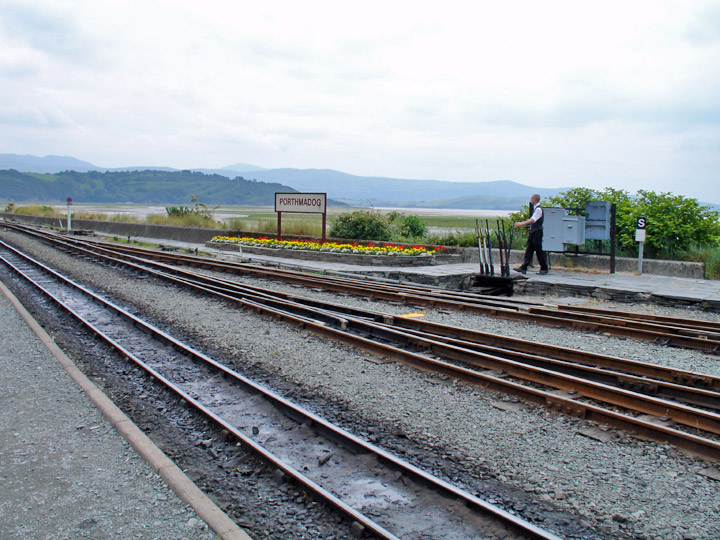
Ffestiniog Railroad tracks on the Cob at Porthmadog
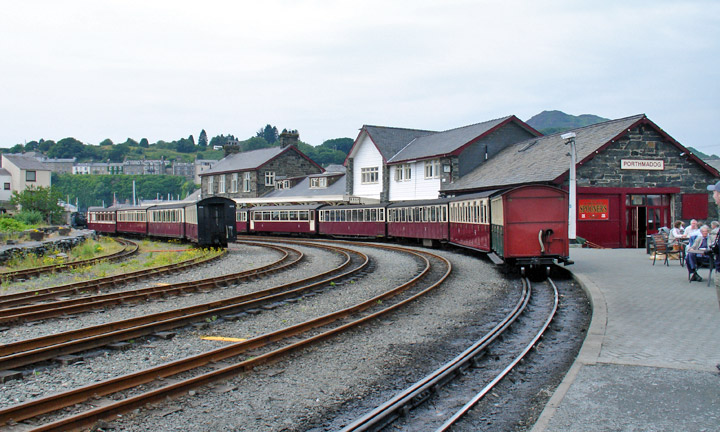
station at Porthmadog
In the eighteenth century. when Porthmadog and Blaenau Ffestiniog did not exist, this part of Wales was a remote mountain area. As far back as 1798 W.A. Madocks had acquired land and soon afterwards carried out reclamation projects. first on the shore of Traeth Mawr. which then extended several miles inland to Pont Aberglaslyn. and culminating in the great embankment, the Cob. right across the estuary.


adding water to the tender tank
The workmen for this project were housed in a building at the eastern end of the Cob. where now the workshops of the Railway are situated. Since Madocks was the Member of Parliament for Boston in Lincolnshire. he called the building Boston Lodge. At the other side of the estuary the Cob diverted the River Glaslvn. which scoured a channel to form the natural harbor that was to play a dominant role in the history of slate mining and the Ffestiniog Railway. This harbor was called Port Madoc. known today as Porthmadog.
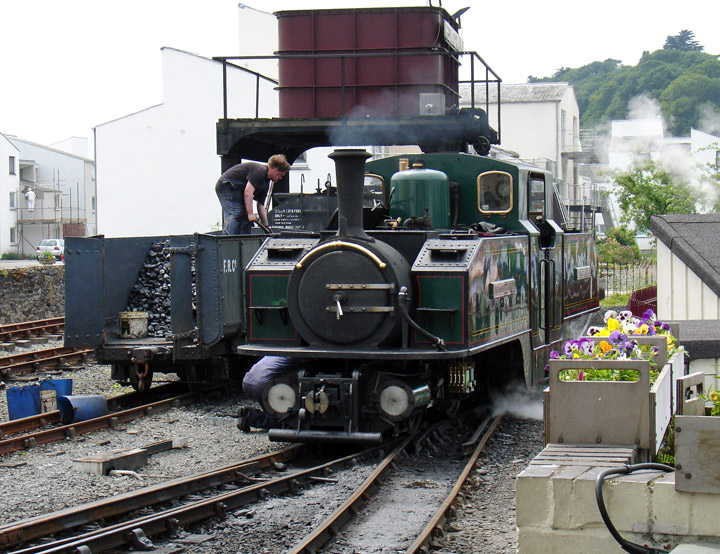
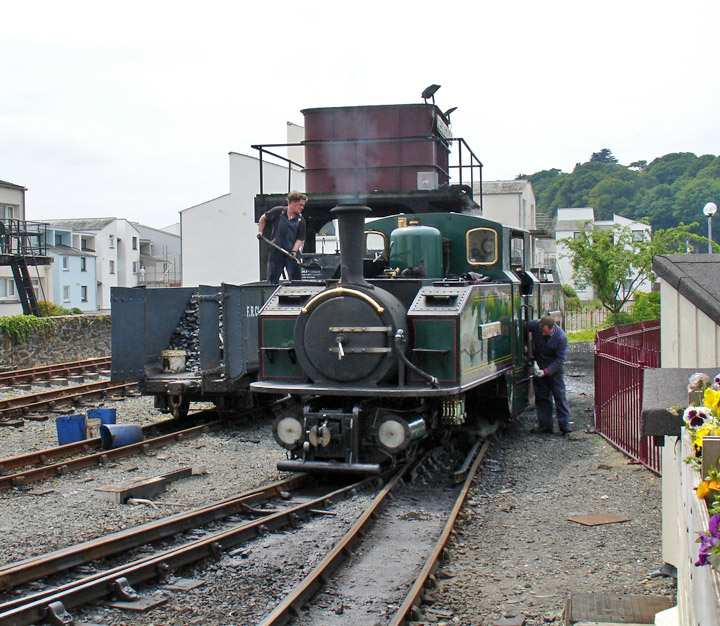
adding the coal
Meanwhile. high up in the mountains around Blaenau Ffestiniog. slate deposits were being exploited in small quantities and laboriously taken by pack animal and farm carts over rough roads down to the River Dwyryd. Here the slate was loaded into shallow-draft river boats for transport downstream where it was loaded yet again, this time into sea-going sailing ships.
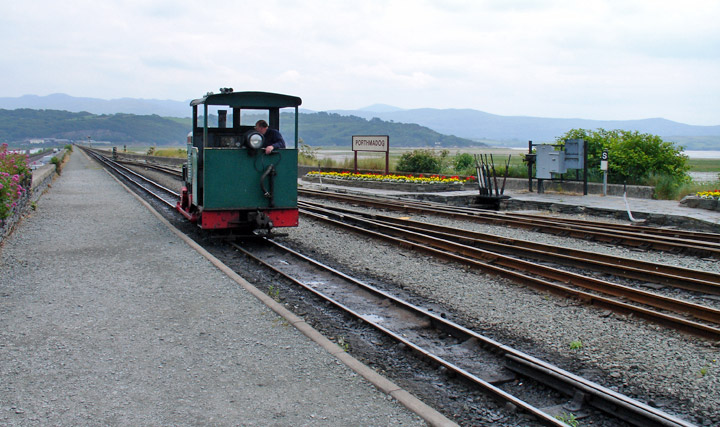
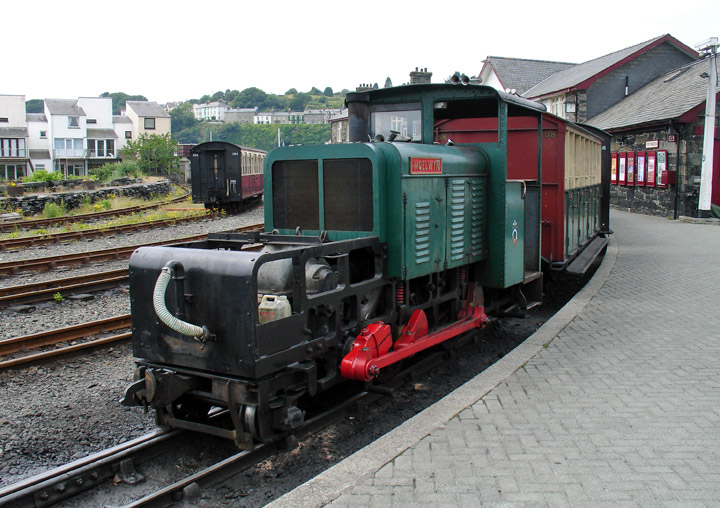
the switching engine
In 183O. shortly after Madock’s death. Samuel Holland. who
was quarrying slate at Rhiw. joined Henry Archer. a young businessman from Dublin. to promote
the Ffestiniog Railway. incorporated by Act of Parliament on 23 May 1832. James
Spooner from Worcestershire was responsible for the survey and construction of
the Railway. The route. whose final mile crossed the Cob. enabled loaded slate
trains to run down by gravity while the horses that were used to haul the empty
wagons back up the line could feed and rest in "dandy" wagons.
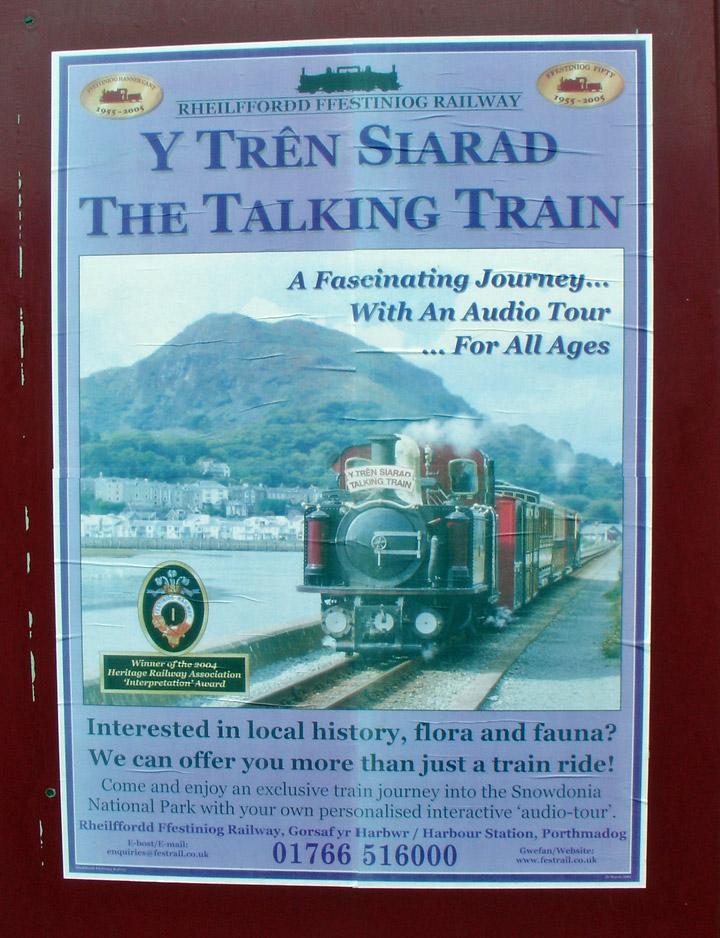
train journey through Snowdonia National Park
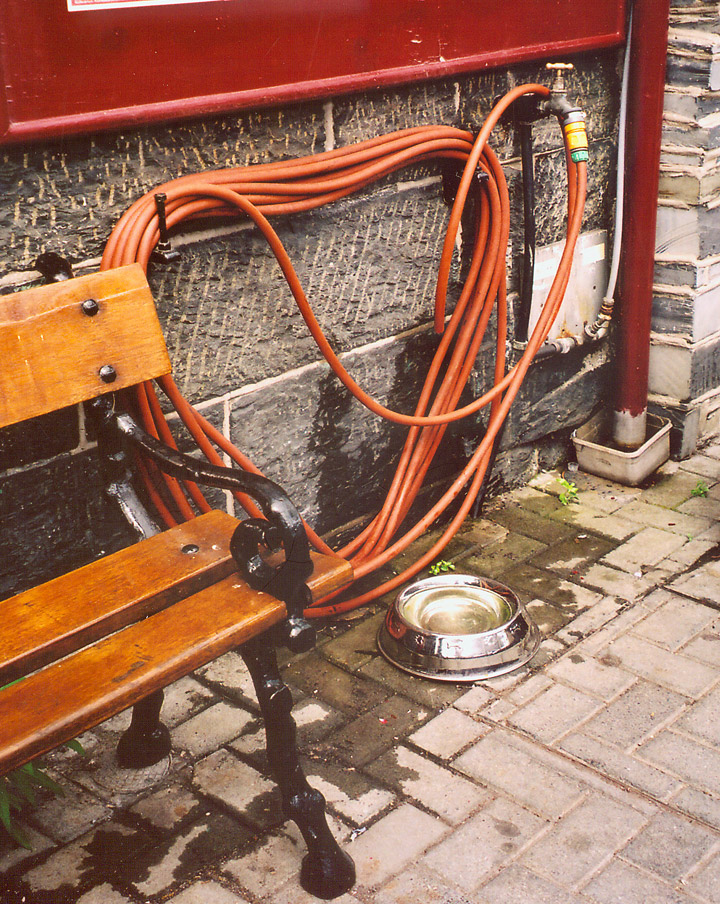
provision for the dog at the station
The 23.5 inch gauge, corresponding to that being used in the quarries, was wide enough to allow the horses to work efficiently when pulling the empty wagons and narrow enough to enable the Railway to negotiate the sharp curves made necessary by the mountainous terrain. The wagons were small enough to he loaded easily and manhandled in the quarry and at the port.
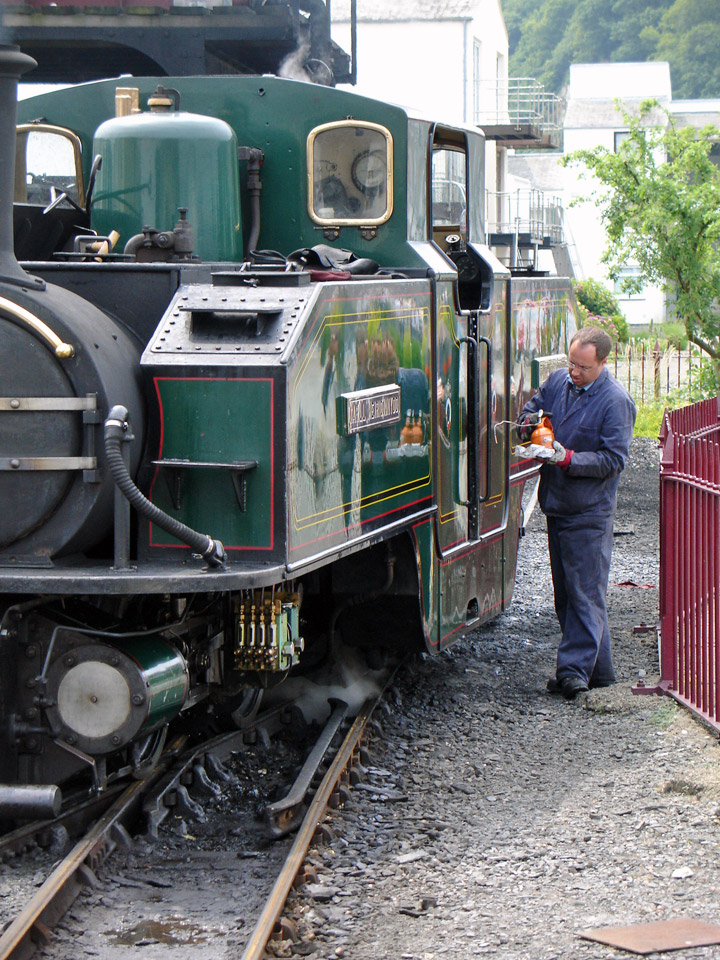
oiling the needed parts
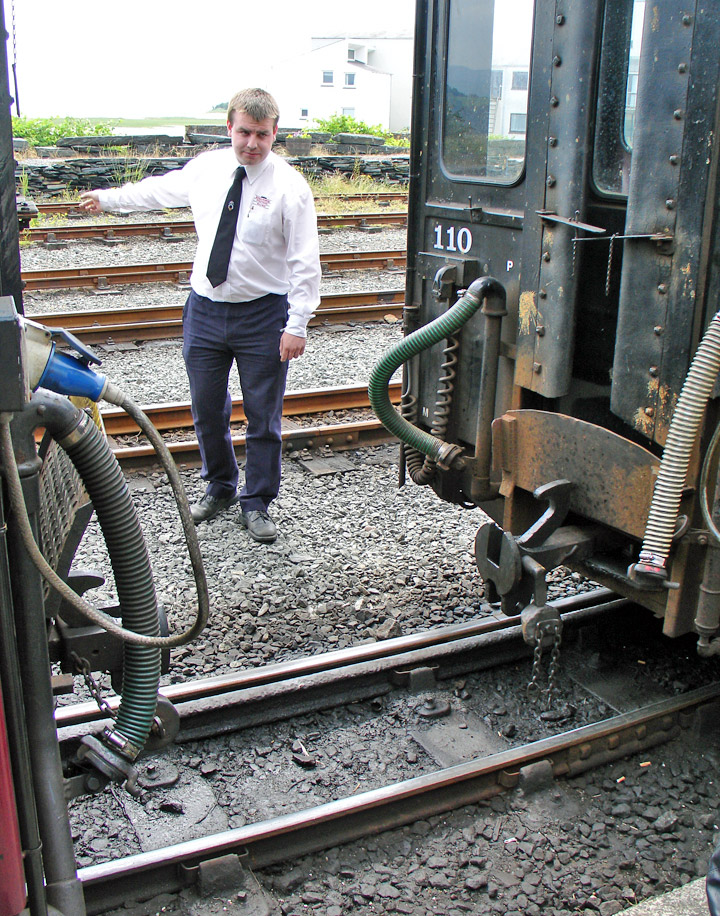
coupling additional cars
As slate traffic increased. the horse and gravity system of operation: came under strain and thoughts turned in the form of power then making such an impact or transport elsewhere - the steam engine. But in the 1840's steam locomotives on so narrow a gauge were thought impracticable: and carrying passengers was illegal on new railroads of less than the British standard gauge of 4 feet 8.5 inches.

prepared engine being moved to the front of the train
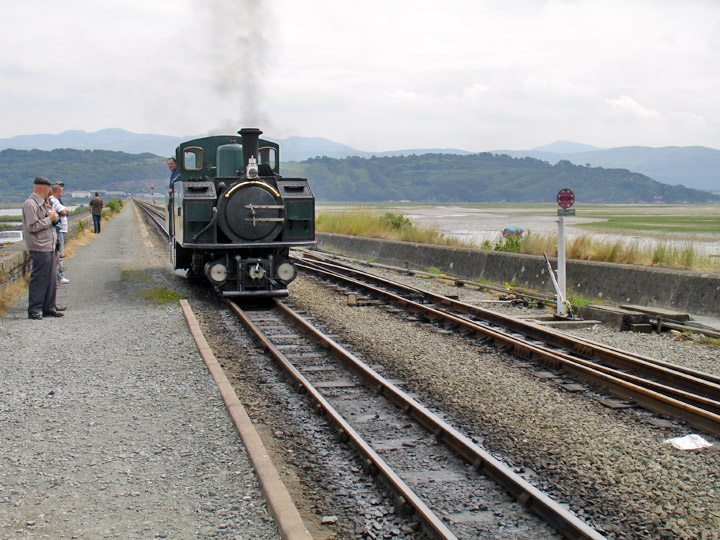
tracks on the Cob
These factors delayed the introduction of steam and it was only after Charles Easton Spooner (James' son) took control of the Railway in 1856 that he looked more closely into the question of steam locomotives. In 1862 he invited tenders to design and build. At length in 1863 contracts were signed with George England and Co.. London. for four small .locomotives. in July 1863 The Princess and Mountaineer were brought to Caernarfon by rail and thence to Port Madoc by horse and cart: they entered service in October. The other two. The Prince and Palmerston. arrived in 1864.

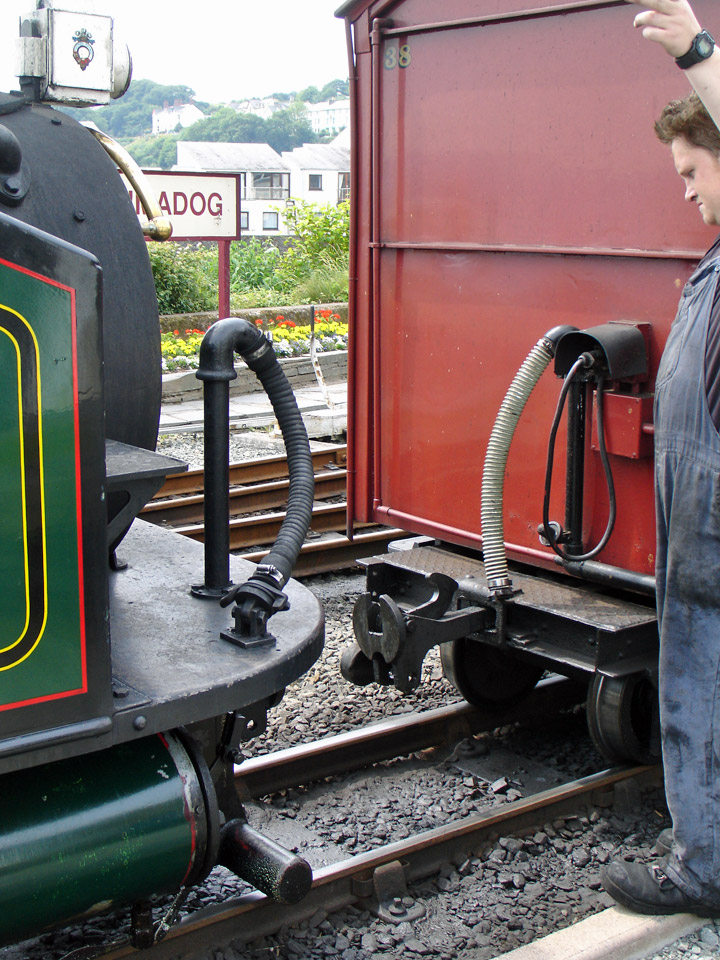
coupled to the train
In the same year. the Board of Trade gave the Railway permission to run passenger trains, the first on a narrow gauge in Britain. The four-wheeled carriages were very low. with people sitting back to back to keep the weight as central as possible. Some of these unique vehicles survive as part of the Railway’s valued heritage. From 1866 primitive open carriages offered a cheap service for quarrymen. Traffic increased and two more engines. Welsh Pony and Little Giant. arrived in 1867. But the limitations of a single line were becoming too restrictive and in 1869 an Act was passed permitting the line to be doubled.
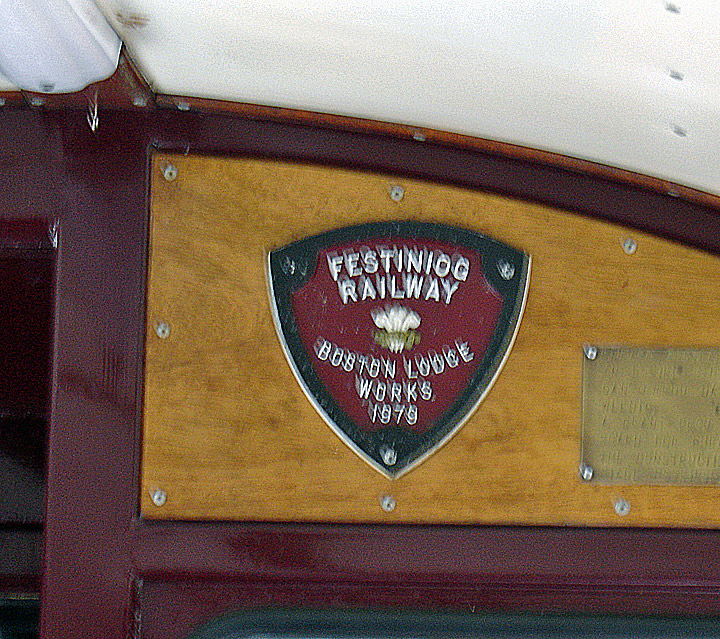
the railroad shop
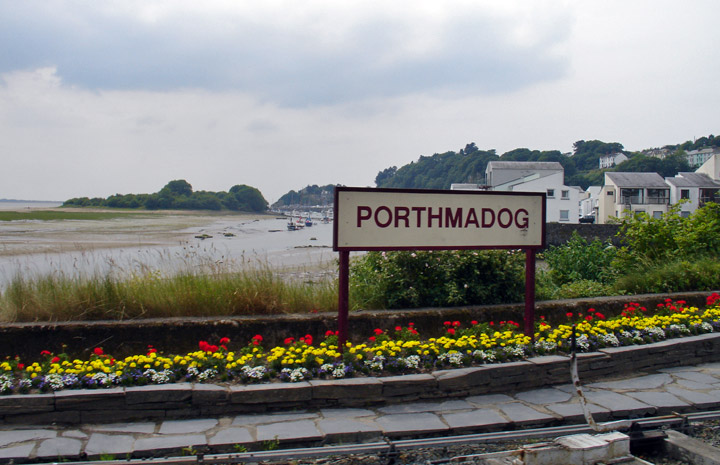
leaving the Porthmadog station
This would, however, have been extremely costly and instead the Railway turned to the ingenuity of the engineer Robert Fairlie. who had designed a locomotive that could pull longer trains and so improve the capacity of the line. The problem had been how to build a more powerful locomotive that could nevertheless get around the sharp curves and up steep gradients. The solution was a double-bogie engine. It looked like two locomotives back-to-back but was in fact one long rigid boiler with central fireboxes and driving position. Each end of the boiler was mounted on a swiveling powered bogie. The same principle is used in most of today’s diesel and electric locomotives. In 1870. before a distinguished assembly of railway engineers, including the Imperial Russian Commission. the first Fairlie double engine Little Wonder was demonstrated and proved to have more than double the power of the earlier locomotives. This was but one of the ways in which the Ffestiniog Railway pioneered narrow gauge railways throughout the world.
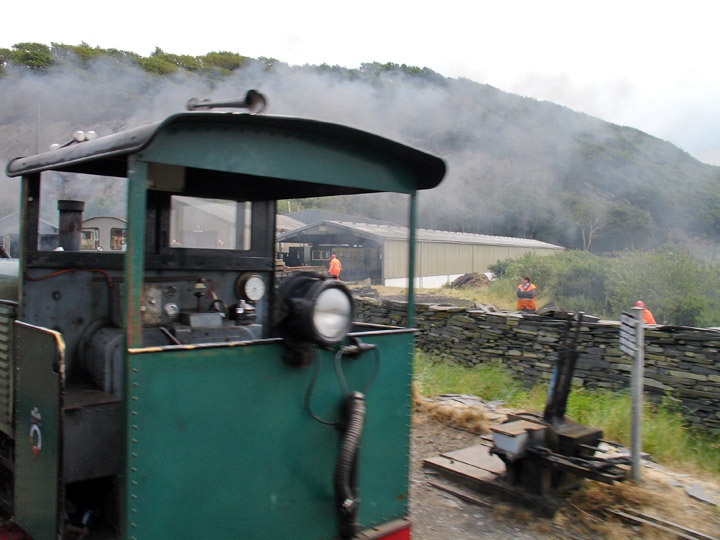
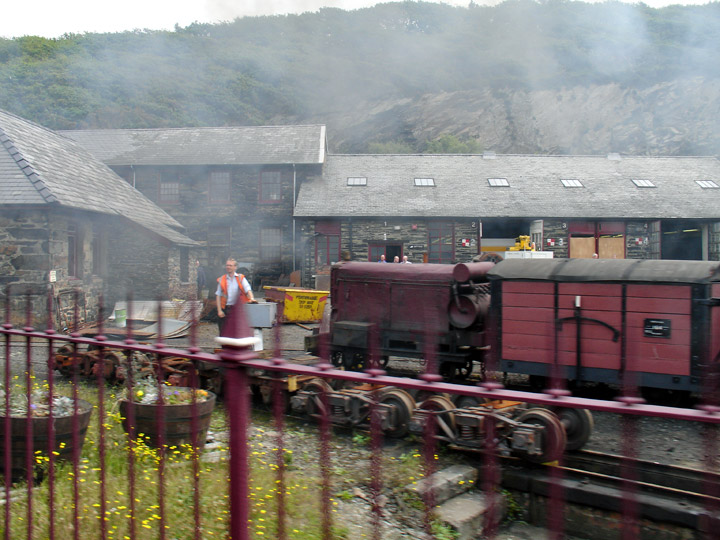
the railroad yards
Soon the Railway introduced improved Fairlie engines. In 1872 James Spooner entered service, followed in 1876 by a single-bogie version Taliesin. Boston Lodge. which had by now become a fully equipped workshop. rose to the task of building two more double engines. Merddin Ernrys in 1879 and Livingston Thompson in 1886. It is interesting to record that when the Railway required a new large locomotive in 1979 it again chose the Fairlie double-bogie design for Earl of Merioneth. which was also built at Boston Lodge.
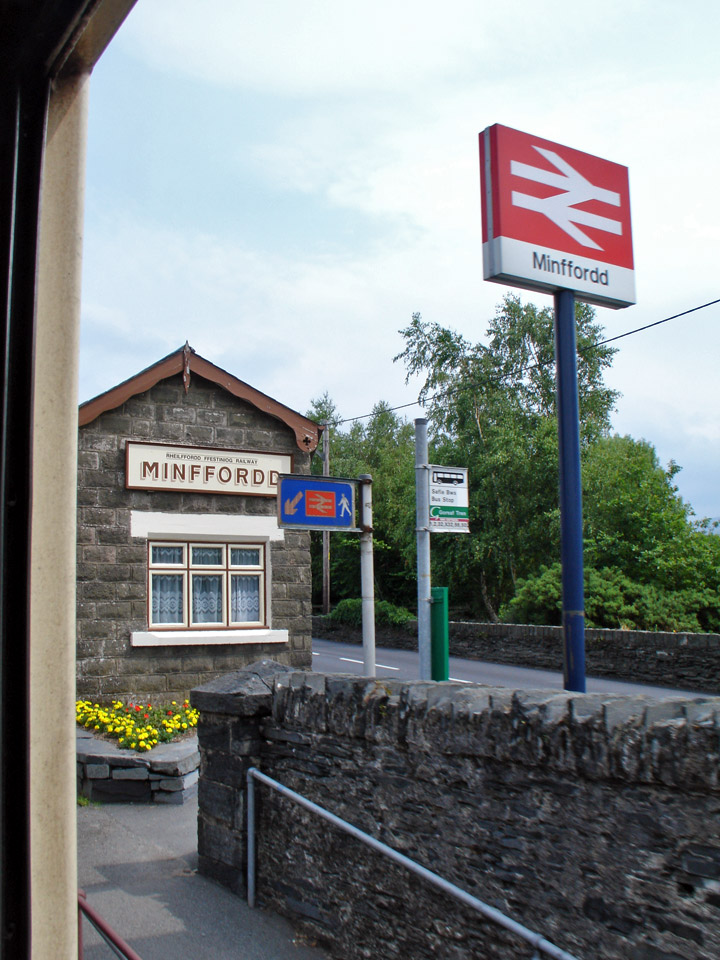
past Minffordd station

horses
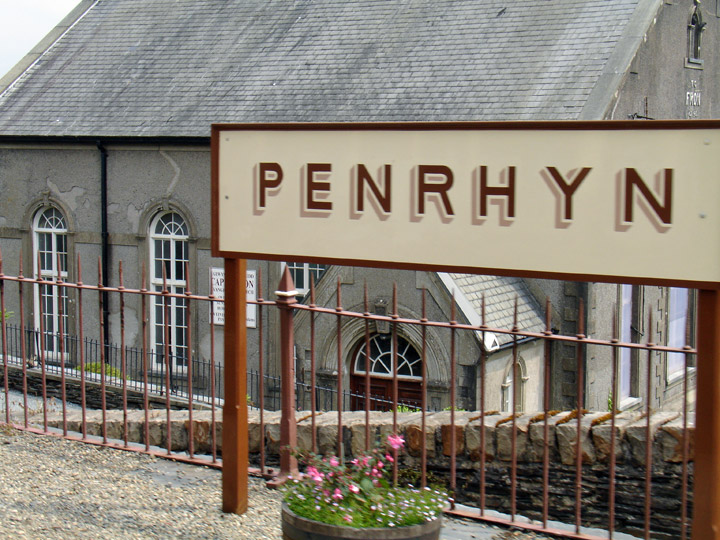
Penrhyn station
From 1873 the bogie principle was applied to passenger and goods vehicles also. The passenger coaches 15 and 16 were the first true bogie coaches in service in Great Britain and were among the earliest iron-framed bogie coaches in the world. Both these vehicles are still in service.
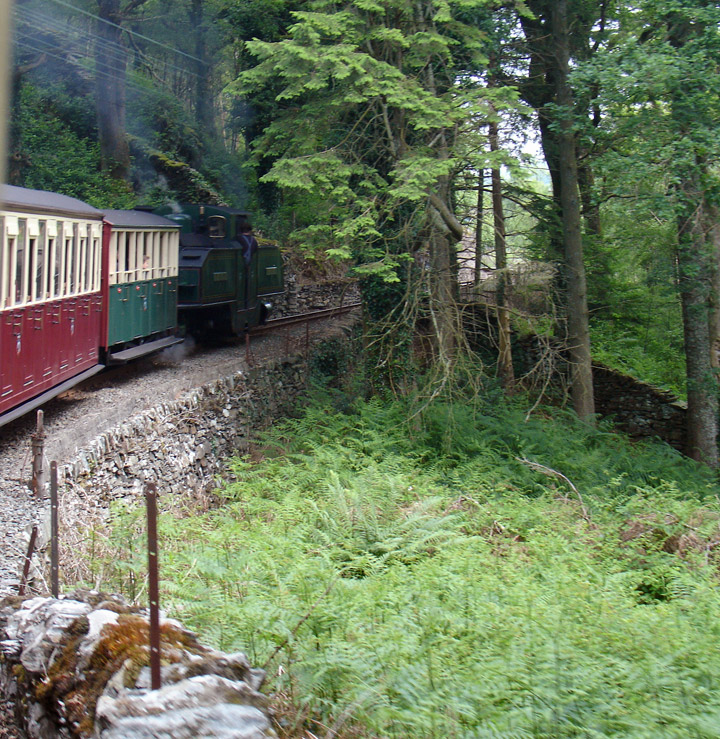
rounding a curve
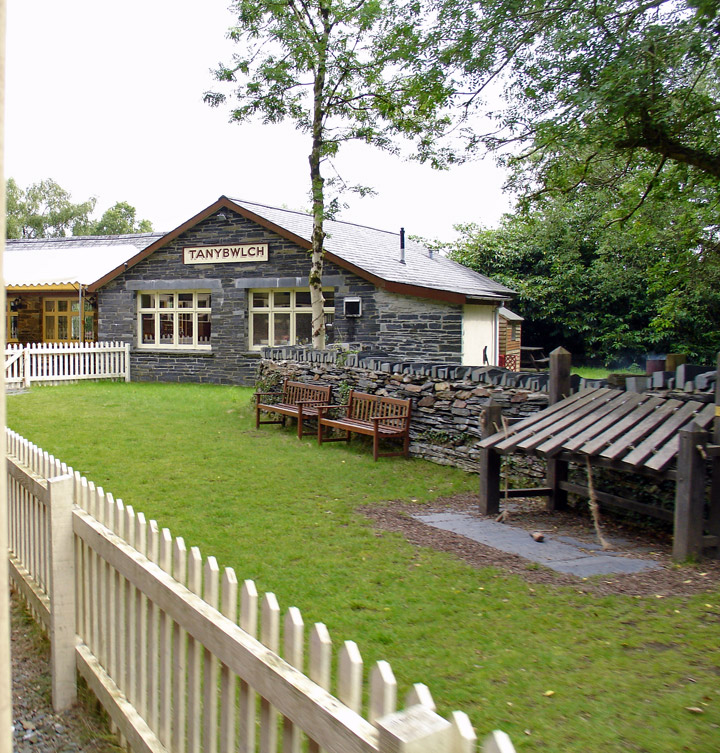
passing Tanybwlch station
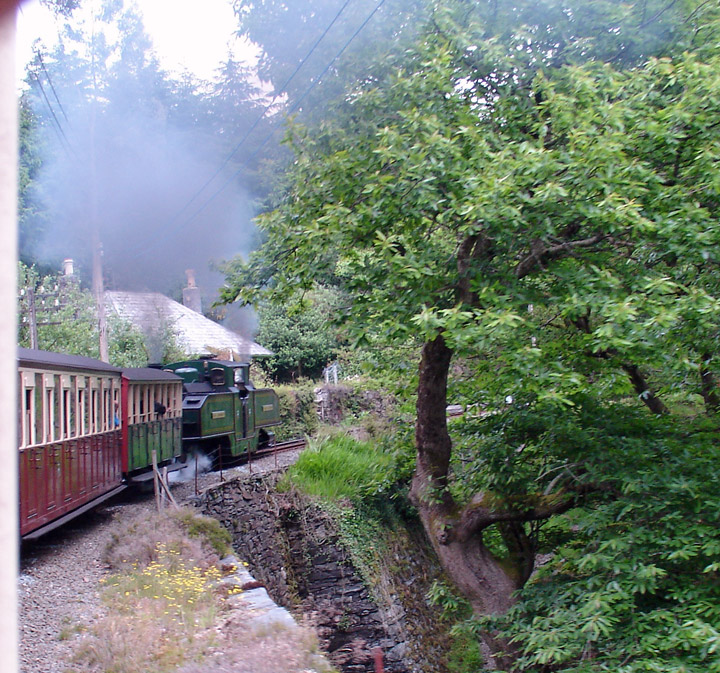
going over a stone embankment
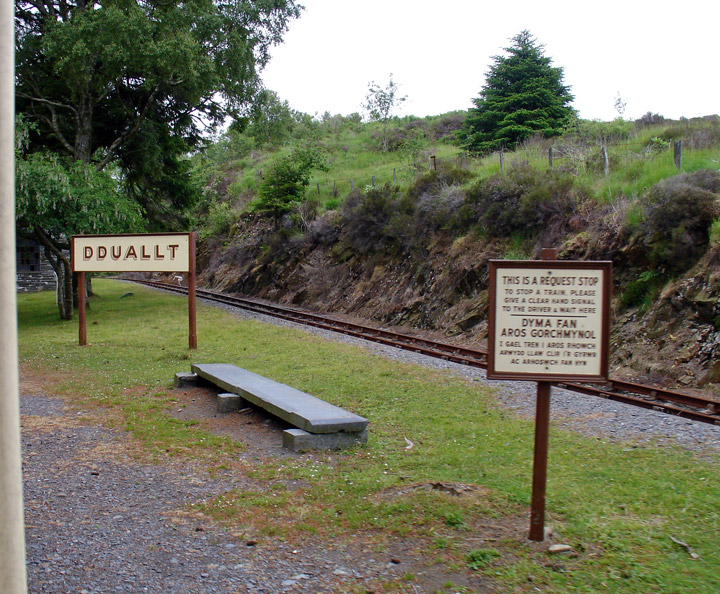
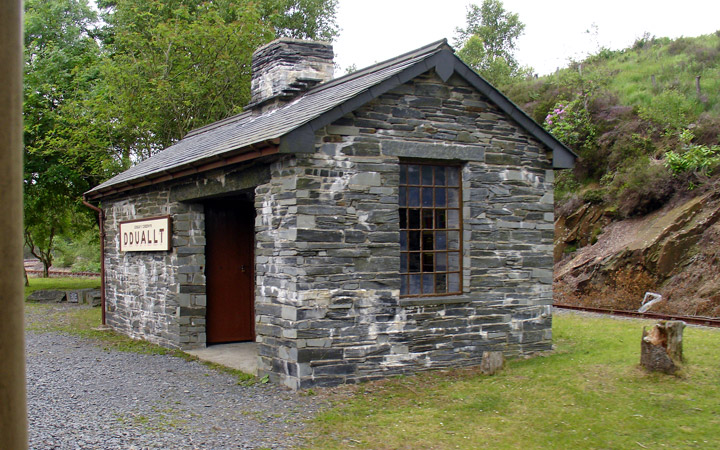
Douallt station
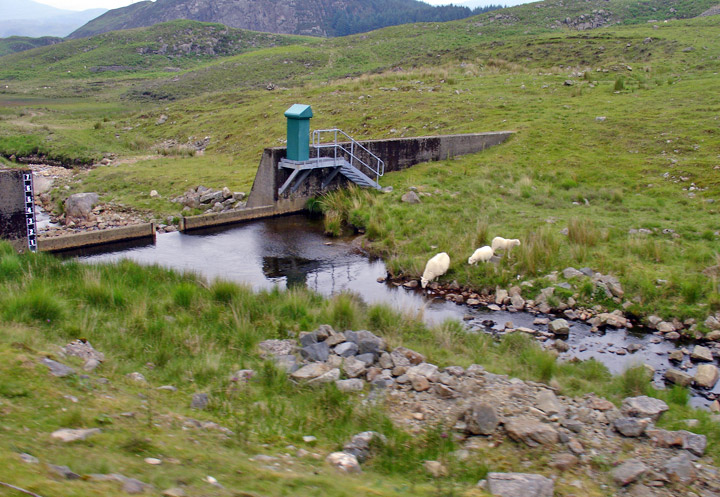
lamb in Snowdonia National Park
More Photos of Snowdonia National Park
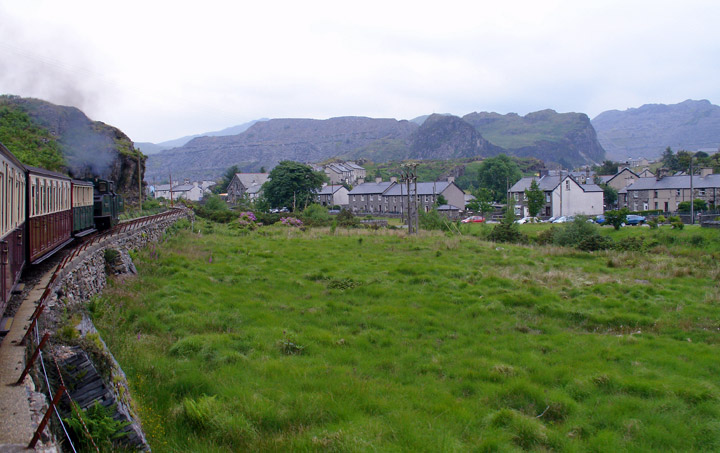
entering the slate village of Blaenau Ffestiniog
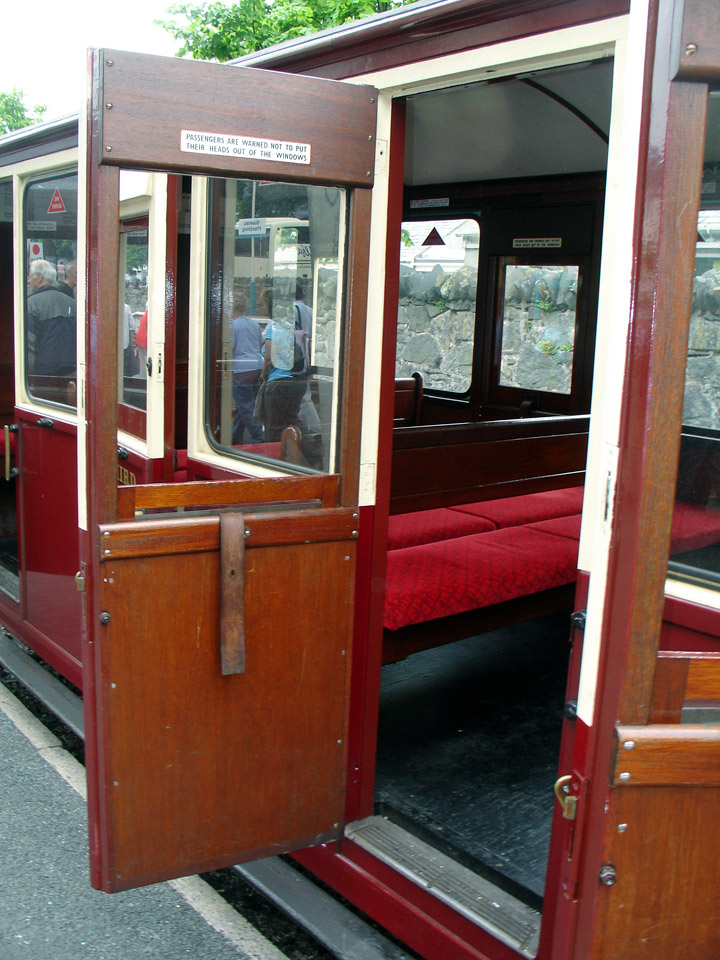
leaving the car
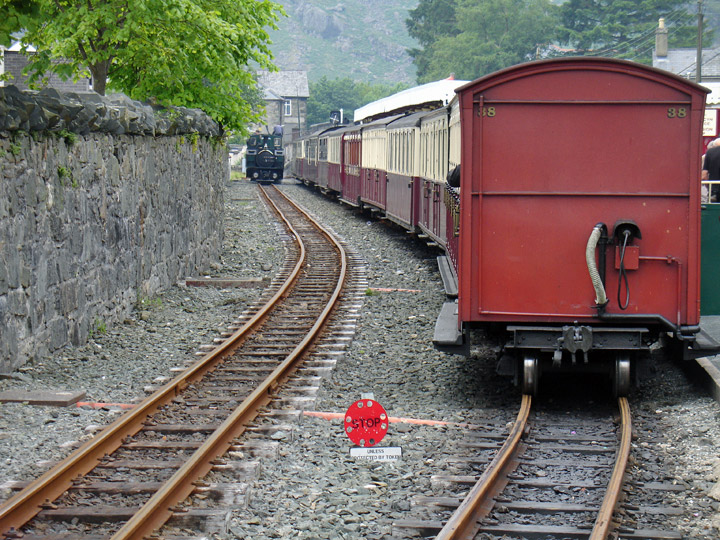
engine preparing for the return trip
Return to Wales Elderhostel page